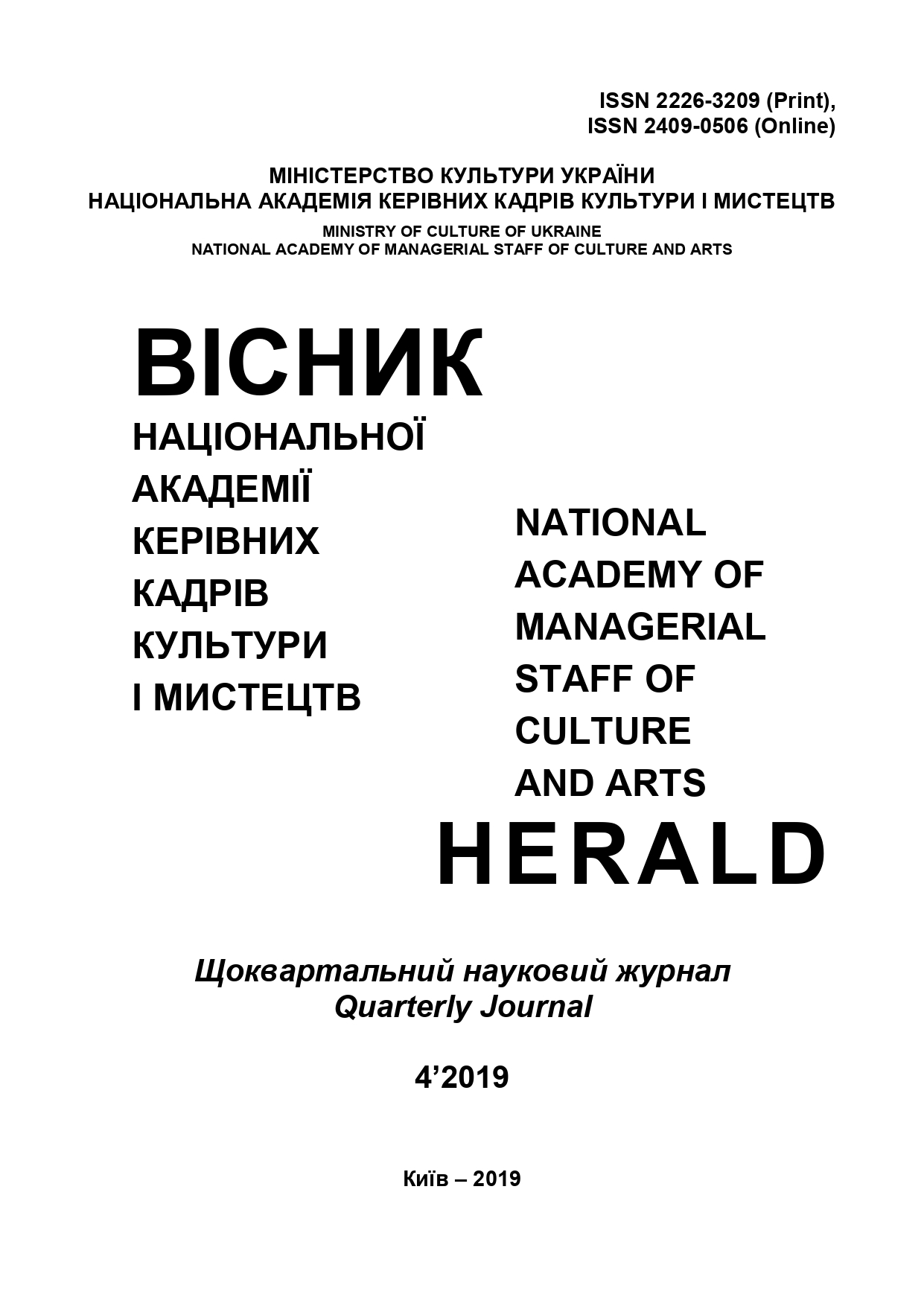Семіосфера біблійних образів: функціонування в культурі
The Semiosphere of Biblical Images: Functioning in Culture
Author(s): Olena Anatoliyivna StepanovaSubject(s): Music, History of Church(es), Semantics, Sociology of Culture, Biblical studies
Published by: Національна академія керівних кадрів культури і мистецтв
Keywords: semiosphere; biblical images; culture; text; Saint Mark the Evangelist;
Summary/Abstract: Purpose of the article is to study the essence of the functioning of “wandering” biblical images in culture and the disclosure of retransmitted senses, the semantic core of which is explicated on the basis of the narratives of the Holy Scriptures, as well as previous cultural topos. The methodology of the research consists of using the structural-semiotic method, which makes it possible to interpret the semantic meanings of individual biblical images and explain the strategies of its functioning in culture. The scientific novelty consists in proving the study of the functioning of biblical images in the continuum of world culture, in particular by the example of the semiosphere of the figure of the Saint Mark the Evangelist, present in the cultural texts of both the Christian East and the West. The functioning of this Christian image is analyzed not only in the traditional sacral culture (iconography, music), which can be traced throughout history but also in modern popular culture. Conclusions. Biblical images that are universal in their meaning function in the context of intertextual relations – in different types of art, national cultures, and confessional communities over a long chronological dimension, including modernity. The image of the Evangelist Mark demonstrates how the inner semantic potential of this saint “travels” and reinterprets, presenting the deeper meanings of the Gospel narrative, which acts as a semantic core. The broad references of the semiosphere of the image of St. Mark create a complex interweaving of “texts in texts,” whose orderly interpretation provides a meaningful perception. The analyzed image of St. Mark the Evangelist demonstrates how the inner semantic potential of this figure of Christian history "travels" and reinterprets, presenting the deep meanings of the evangelical narrative that emerges as a semantic core. The linguistic references to the semiosphere of the image of St. Mark create a complex interweaving of "texts in texts," an orderly interpretation of which enables a meaningful perception.
Journal: Вісник Національної академії керівних кадрів культури і мистецтв
- Issue Year: 2019
- Issue No: 4
- Page Range: 8-13
- Page Count: 6
- Language: Ukrainian

